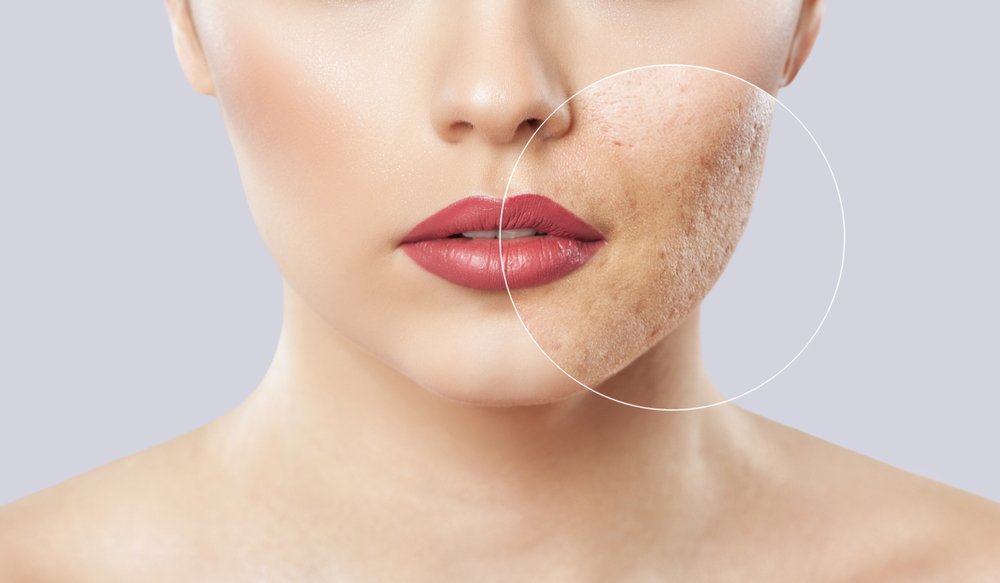Popular treatments for acne scars

Do you struggle with acne scarring? If so, you are not alone. Millions of people struggle with the effects of acne scarring making it one of the most common and frustrating skin conditions. It affects all ages, genders and races. Research has shown that acne scarring can have a negative impact on one's self confidence.
Fortunately with the latest advancements in aesthetics and dermatology, people have more options now than ever before to improve their acne scarring and improve their skin. It is important to note that before treatment can start for acne scarring you must be clear from active breakouts. Below I will explain my favorite procedures to remove or improve acne scars.
Microneedling
Microneedling is a type of treatment often referred to as collagen induction therapy. During this procedure a topical numbing solution is applied to the skin for twenty to thirty minutes prior to the treatment. After the numbing solution is removed and skin is fully cleansed a gliding serum is applied to the skin. A microneedling pen is used creating tiny micro injuries to the skin. This forces your skin to stimulate the growth of new collagen. Down time is often minimal and you typically heal within seven to ten days following treatment.
Following microneedling treatment, the skin works quickly to rejuvenate new tissue.
Microneedling is a fantastic option for any skin type and usually requires six treatments spaced four to six weeks apart for the best results. For more severe acne scars, up to twelve treatments may be required. A study published in the Journal of Cosmetic Dermatology found that microneedling improved the appearance of acne scars in seventy percent of participants.
Chemical Peels
Chemical peels are another great option for acne scars. During a chemical peel a chemical solution is applied to the skin. Peel strengths can range from very superficial to deep and most require the skin to be preconditioned prior to treatment. The process works by removing the outer layer of old skin through peeling. The new skin that replaces is often more smooth and less textured in appearance. Chemical peels also help with discoloration from scarring including post inflammatory hyperpigmentation and redness. The result from this treatment is often a brighter and even skin tone. Chemical peel patients should avoid sun exposure leading up to and following the treatment. Oftentimes chemical peels are best performed in the fall and winter months when sun exposure is minimal.
Chemical reconstruction of skin scars is another form of a chemical peel treatment using trichloroacetic acid (TCA) also known as TCA CROSS. With this technique a high concentration of TCA is placed in each individual scar using a wooden toothpick or similar instrument. This treatment works especially well for icepick scars which are typically the most difficult to treat. TCA CROSS technique is best performed in a two to four week interval.
Morpheus8 Resurfacing
Morpheus8 resurfacing is a treatment where small micro pins measuring half a millimeter deep are used to penetrate the skin and deliver radiofrequency energy. As your skin heals, it produces collagen and elastin. Often an anesthetic is offered prior to treatment including topical creams or an injection lidocaine. With this treatment the surface of the skin is heated to help with superficial irregularities such as acne scarring. Immediately following the treatment the skin
will feel warm, slightly tight and mild swelling may appear. Redness and irritation usually subsides between twenty four to forty eight hours and has little to no down time. Morpheus8 resurfacing requires between three to six treatments and is best performed six weeks apart.
In conclusion the best treatments for acne scars will vary depending on the type and age of the scars. While most treatments work well by stimulating collagen production in the skin they will not give instant results. Collagen growth can take anywhere from four to twelve weeks to complete and can vary from person to person. While the above treatments may work well for most, it is always good to schedule a consultation to ensure you are a candidate for any cosmetic treatment. This ensures you receive a treatment plan tailored to you and gives you an opportunity to discuss contraindications, detailed post care instructions and go over medical history.
Danyelle Schultz
Peach Dermatology
Licensed Esthetician and Assistant Laser Practitioner

